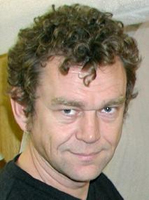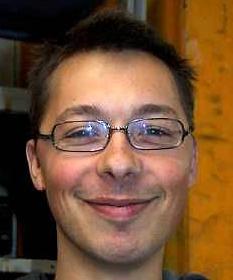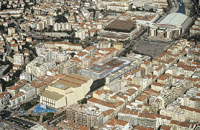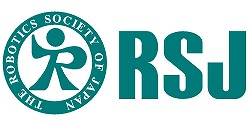SPECIAL EVENTS
The following special event is scheduled:
Round table
"Robots in an human environment"
This round table will be jointly
organized with associations for elderly home care,
handicapped associations and associations of persons with disabilities.
Its purpose is to help robotics researchers to better understand the
requirements of such end-users.
Confirmed speakers:
-
Jean-Luc SIMON: Chair of he Disabled Peoples' International European Region
(see web link), the
text of his presentation.
-
Giulio ROSATI: Associate Professor,
University of Padua - Faculty of Engineering,
Department of Innovation in Mechanics and Management (DIMEG)
(see
web link)
-
Rolf RIEMENSCHNEIDER: European Commission, DG INFSO H3, Head of Sector,
responsible of the "Ambiant Assisted Living" (AAL) joint program (see
web link), , the
text of his presentation.
Contact:Erika Ottaviano
KEYNOTE SPEAKERS
- 9/23, Paul Verschure
Laboratory for Synthetic Perceptive, Emotive
and Cognitive Systems - SPECS
Institute of Audiovisual Studies/Technology Dept.
ICREA & Universitat Pompeu Fabra, Barcelona, Spain

text
the presentation slides
TITLE/ABSTRACT:
Building a Cyborg:
A Brain Based Architecture for Perception, Cognition and Action
The biggest scientific challenge humans face is to understand the mind and brain.
This quest is also of great practical relevance. Already the 1 mm^3 brain of
the bee shows feats of navigation, learning and communication that is beyond the
current state of the art in robotics. In our work we take the view, derived from the
17th century philosopher Vico, that we should validate our theories of the mind/brain in practical construction. Hence, from this perspective we should be able to construct
artificial mind/brain systems and repair existing - biological - ones or,
in other words, build a cyborg. In order to construct a cyborg such as
Ghost in the Shell's Motoko Kusanagi or Robocop, we will need at least three core ingredients:
- 1) hybrid electronic-biological interface systems,
- 2) methods to define and shape the functional properties of neuronal systems and
- 3) a theory on how the components of the system should be integrated into one consistent architecture.
In this talk I will describe current efforts to develop these three core concepts and
technologies required to construct a cyborg.
Specifically, I will define the Distributed Adaptive Control (DAC) neuromorphic architecture that proposes how different level of the neuraxis - from the brainstem to the cerebral cortex - interact to give rise to perception, cognition and action (1,2).
Subsequently I will discuss a neuroprosthetic device, or silicon cerebellum (3),
for the replacement of discrete learning functions of the brain that we
have developed within the DAC framework. Lastly I will discuss novel approaches
for cognitive neurorehabilitation that show how we can induce functional
reorganization of the central nervous system through multi-modal interactive stimulation.
References
- 1: Verschure, P.F.M.J., Voegtlin, T. & Douglas, R.J. (2003)
Environmentally mediated synergy between perception and behaviour in
mobile robots. Nature, 425: 620-624.
- 2: Wyss, R, König P, Verschure, P.F.M.J. (2006) A model of the ventral
visual system based on temporal stability and local memory. Public
Library of Science (PLoS) Biology. 4:5, 836-43
- 3: Hofstoetter, C., Mintz, M. & Verschure, P.F.M.J. (2002) The
Cerebellum in Action: A Simulation and Robotics Study. European Journal
of Neuroscience. 16:1361-1376.
SHORT BIO:
Dr. Paul F.M.J. Verschure (1962) is a research professor with the Catalan
Institute of Advanced Studies (ICREA) and director of the Institute of
Audiovisual Studies at the Universitat Pompeu Fabra in Barcelona, Spain.
He received both his Ma. and PhD in psychology. His scientific aim is
to find a unified theory of mind, brain and body through the use of
synthetic methods and to apply such a theory to the development of novel
technologies and quality of life enhancing applications.
Paul has pursued his research in psychology, artificial intelligence and
neuroscience at different leading institutions: the Neurosciences Institute
and The Salk Institute, both in San Diego, the University of Amsterdam,
University of Zurich and the Swiss Federal Institute of Technology-ETH and
currently Universitat Pompeu Fabra in Barcelona, Spain.
Paul's research group on Synthetic Perceptive, Emotive and Cognitive Systems
(specs.upf.edu) comprises a multidisciplinary team of 25 doctoral and post-doctoral
researchers that include physicists, psychologists, biologists, engineers, mathematicians,
designers, artists and computer scientists. Collectively they aim at understanding,
constructing and healing the brain. Ongoing projects deal with models of the neuronal
mechanisms underlying perception, cognition and behavior that are applied to wheeled
and flying robots, interactive spaces and avatars. In addition, these technologies are
translated towards the construction of neuroprosthetic devices and the rehabilitation
and quality of life management of a range of neuronal pathologies including: stroke,
Alzheimer disease, chronic pain, autism and spinal cord lesions. The results of his
research have been published in leading scientific journals including Nature, Science,
Public Library of Science (PLoS) and Proceedings of the National Academy of Science USA (PNAS).
Paul's basic research is further augmented through the application of
concepts and methods derived from the basic science programs of SPECS to
the development of interactive creative installations and intelligent immersive
spaces. Since 1998, he has, together with his collaborators, generated 17 public exhibits
of which the most ambitious was the 200m2 immersive space
"Ada: Intelligent space" for the Swiss national exhibition Expo.02,
that was visited by 560000 people. The most recent performance was
the mixed reality spectacle re(PER)curso (at Art Future 07) and an
interactive 3D ambient audio-visual display called "The Synthetic Oracle" for ESOF08.
When he's not working Paul is with his family or training for another Ironman triathlon.
- 9/24, Yves Rollot

Yves has got his PhD in robotics at the
"Laboratoire de Robotique" of Paris 6 University in 2000 and has then be hired
as a researcher at INRA (Agronomy National Research Institute) to study the
biomechanics of horses. In 2005 he moves to a completetly different
field, entertainment machinery, as head designer of the
"Great elephant of Nantes", a gigantic animal of 12-meter high by 8-meter wide
(see
their web site)
- 9/25, Takeo Kanade
Robotics Institute
Carnegie Mellon University
Pittsburgh, PA 15213, USA

TITLE/ABSTRACT:
Understanding Human Faces
A human face conveys important information: identity, emotion, and intention of the person.
Technologies to process and understand human faces have many applications,
ranging from biometrics to medical diagnosis, and from surveillance to human-robot
interaction. This talk will give an overview of the recent progress that the
CMU Face Group has made, in particular, robust face alignment, facial Action Unit
(AU) recognition for emotion analysis, and facial video cloning for understanding
human dyadic communication.
SHORT BIO:
Takeo Kanade is currently the U. A. and Helen Whitaker University Professor
of Computer Science and Robotics and the director of Quality of Life Technology
Engineering Research Center at Carnegie Mellon University. Previously he
was the Director of the Robotics Institute from 1992 to 2001.
Dr. Kanade received his Doctoral degree in Electrical Engineering from Kyoto
University, Japan, in 1974. After holding a faculty position in the Department
of Information Science, Kyoto University, he joined Carnegie Mellon University in 1980.
Dr. Kanade works in multiple areas of robotics: computer vision, multi-media,
manipulators, autonomous mobile robots, medical robotics and sensors. He has
written more than 300 technical papers and reports in these areas,
and holds more than 20 patents. He has been the principal investigator
of more than a dozen major vision and robotics projects at Carnegie Mellon.
Dr. Kanade has been elected to the National Academy of Engineering (1997)
and the American Academy of Arts and Sciences (2004). He is a Fellow of the IEEE,
a Fellow of the ACM, a Founding Fellow of American Association of
Artificial Intelligence (AAAI), and the former and founding editor
of International Journal of Computer Vision. He has received many awards,
including the Franklin Institute Bower Prize, Okawa Award, C&C Award, Joseph
Engelberger Award, IEEE Robotics and Automation Society Pioneer Award,
FIT Accomplishment Award, and IEEE PAMI-TC Azriel Rosenfeld Lifetime Accomplishment Award.
|











